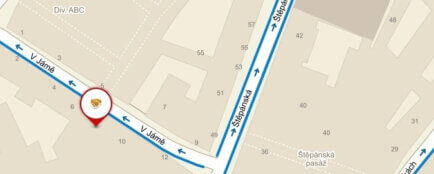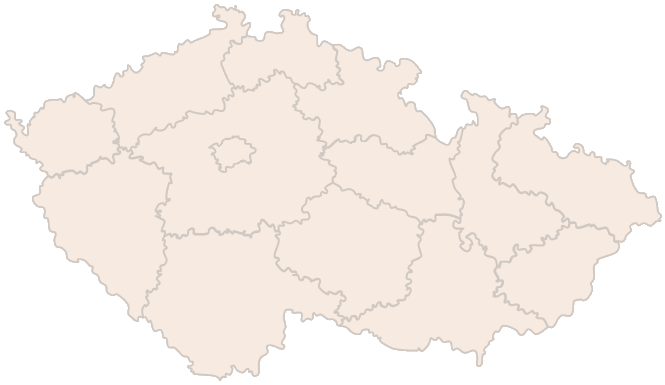Types of land
The primary division of land can be found in the Land Registry, which contains information about what is currently on the land. Specifically, land is divided into the following types:
- Built-up areas and courtyards;
- Agricultural land, which is subdivided into: arable land, hops, vineyards, gardens, orchards and permanent grassland;
- Forest land;
- Water areas;
- Other areas.
But what you will be more interested in is the land use, which determines what you can do with the land. This information can be found in the zoning plan of the municipality under which the land falls. You may find a variety of uses (e.g. residential area, garden colony, agricultural area, etc.).
The information in the Land Registry may therefore not be consistent with the zoning plan. For example, your plot of land that is registered as a garden in the Land Registry may be marked as a mixed residential area in the zoning plan. If you are planning to build on the land, it is the use of the land that you are interested in.
The specific conditions for building on your land can therefore be found in the municipality’s zoning plan. This is available on the municipality’s website or from the municipal authority, the building authority or the regional authority.
Tip for article
Not sure how to find out the type and use of the land? Find the answer in our article.
Change of land type
If the zoning plan designates the land as building land, you are still not completely out of the woods. If you plan to build on agricultural land, you will first have to remove it from the agricultural land fund. You have to apply for removal from the agricultural land fund at the relevant environmental department of the municipality with extended jurisdiction.
The application must be accompanied by:
- an extract from the land register and a map with the location of the land and details of the land and its owner clearly marked;
- a cadastral map showing the proposal to remove the land (ideally from the building designer),
- a calculation of the removalcharges, indicating the procedure,
- consent of the other co-owners (if you do not own the land yourself),
- in the case of temporary removal, a reclamation plan.
Are you solving a similar problem?
Are you planning to buy a plot of land?
We provide a complete legal service related to the purchase of the land, including a reservation contract and escrow of the purchase price. We can also help with land registry and taxes. We handle it quickly and flawlessly so you don’t have to worry about a thing. You can pay after the service has been provided.
I want to help
- When you order, you know what you will get and how much it will cost.
- We handle everything online or in person at one of our 6 offices.
- We handle 8 out of 10 requests within 2 working days.
- We have specialists for every field of law.
The levies are calculated according to the so-called BPEJ code – i.e. the soil-ecological unit, which determines the quality and price of agricultural land. The price per m² is multiplied by the protection coefficient and the size of the area to be removed.
Calculating the levy is simple – you only need to know three details: the basic price of the land according to the BPEJ (you can find this by looking at the BPEJ code in the land register) the soil protection class (according to which the coefficient is assigned) and the size of the land to be removed (in m²).
For example:
Basic BPEJ price: 16 CZK/m²
Protection class: class I = coefficient 11
Land area: 600 m²
16 CZK × 11 × 600 m² = 105 600 CZK
The application must also include a ‘ balance sheet’ for the removal of cultural layers – i.e. what will happen to the topsoil that will be removed during construction. A pedological survey – an analysis of the soil from the excavation on the site – must also be provided.
Change of land use
In addition to the fact that the land is not marked as building land in the land registry, you may encounter the situation that it is not marked as building land even in the municipality’s zoning plan. However, it is not necessarily impossible that you will build a house there one day. However, you should be prepared for a long wait and an uncertain outcome.
In some cases, however, change is ruled out altogether. These are lands that are protected as public utility areas.
In this case, a zoning change will be required. Changes to the zoning plan usually take place every few years. They are decided by the municipal council on the basis of a proposal that can be submitted by the council itself, a public administration body, a citizen of the municipality, an owner or user of real estate in the municipality (e.g. a company) and an authorised investor.
Therefore, if you would like to propose the change yourself, you will have to submit a proposal containing the following information:
- Name and surname, residential address, telephone number and e-mail for communication.
- Description of the change: A brief explanation of what is to be changed and why (e.g. conversion of permanent green space to residential use).
- Identification of the area: Address, parcel number and relevant cadastral area.
- Proof of ownership: Current extract from the Land Registry or purchase contract; for co-ownership, also shares.
- Justification for the change: Brief explanation of the reasons, including any supporting documents.
It should be taken into account that changes are not decided individually but in a package with other proposals. The proposal will be decided by the municipal council, which will then inform you of the outcome.
Frequently asked questions and answers
People often confuse land registry and zoning information and do not know which information plays the main role in their situation. Let’s conclude by answering the most frequently asked questions:
What kind of building can I have on permanent grassland?
Permanent grassland is a type of agricultural land. This is a division according to the Land Registry. This information only tells us that it is agricultural land covered with grass (usually meadow or pasture) and is currently used for this purpose.
If you would like to build a house or cottage on this land, you will be interested to know what type of land it is according to the zoning plan. This will indicate whether and what can be built on the land.
What can be built on arable land?
Arable land is once again one of the agricultural plots in the Land Registry. It is land on which agricultural crops are grown.
The information in the zoning plan applies to you if you build here as well.
What can be built on a garden plot type?
A garden is the third type of agricultural land in the Land Registry. You can build on a garden plot what you would normally expect to build in a garden – for example, a small garden house (up to 25 square metres, 5 metres high and 3 metres deep), a greenhouse, a swimming pool, a pergola or a carport.
However, if you would like to build a larger structure (for example, a larger holiday cottage or family home), then you will again be interested in the information provided in the zoning plan.
What can be built on the land type other area?
Other land is one of the types of land according to the division in the Land Registry. It includes all land that cannot be allocated to another of the existing categories.
Again, the conditions for possible construction can be found in the municipality’s zoning plan.
Summary
Land is divided in the Land Registry according to its current use (e.g. arable land, garden, permanent grassland), but this does not determine what you can build on it. The key is the municipality’s zoning plan, which determines what the purpose of the area is (e.g. residential, agricultural, recreational).
If the land is zoned for development but is listed as agricultural in the land registry, it must be removed from the agricultural land fund. To do this, an application is submitted to the Environment Department and supporting documents such as an extract from the cadastre, a map and a calculation of the levies according to the soil quality (BPEJ) are attached.
If the land is not buildable even according to the zoning plan, a proposal for its change must be submitted. This is considered and approved by the municipal council. Therefore, the zoning plan is always decisive, not just the cadastral record.




